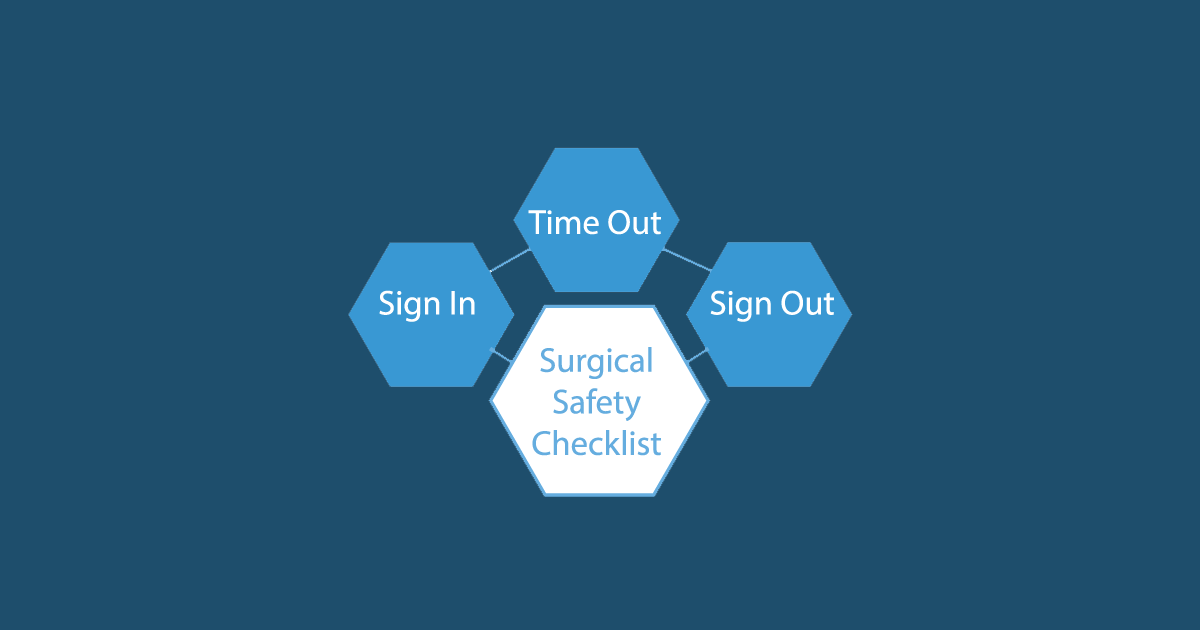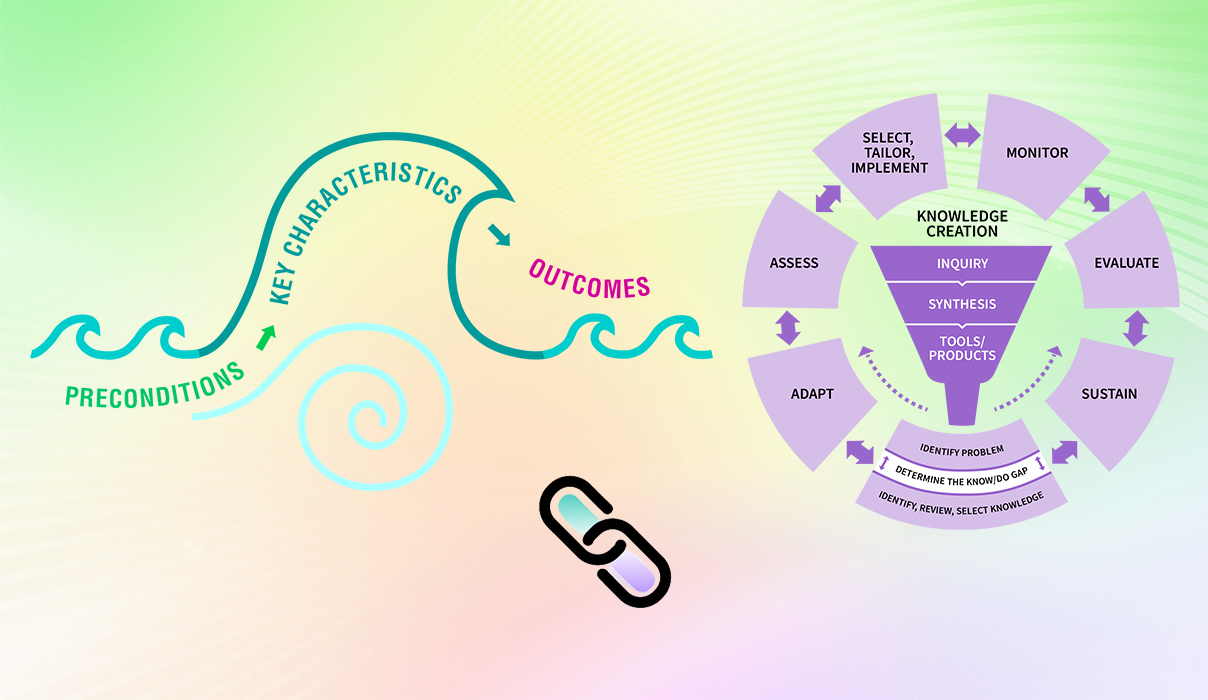Capacity in leading change is increased
Index
In the context of evidence uptake and sustainability, one outcome of social movements is that change agents can develop the know-how of social movement thinking and actions. In this section, you will learn how the experiences of change agents using social movement actions have increased their capacity in leading change and empowered them to lead other change initiatives, such as health transformations, as informal and formal leaders.

What is this element?
As an outcome of engaging in mobilized individual and collective action, health-care providers reinvent themselves as change agents with the developed know-how to lead change initiatives. Here are some positive impacts that flow from this:
- They expect – and are expected – to lead change and engage in health-care reform as part of their roles. Becoming a change agent, in addition to a clinical leader, is assumed and seen as a shared responsibility by all providers within their role and scope (Waring and Crompton, 2017; Wynn et al., 2011).
- have strengthened social ties with their colleagues and workplaces. As a result of partnering in social movement actions and collaborative efforts, change agents have stronger relationships with one another and ties to their organization. This positively impacts retention and commitment to a workplace and to colleagues (Burbidge, 2017; Herechuk et al., 2010; Serna Restrepo A, et al 2018; Kennedy et al., 2019).
- are motivated to engage in other grassroots initiatives. Change agents are more likely to get involved in other change initiatives having seen first-hand the powerful impacts of social movement on change, assuming the shared concern or strongly desired change is one that aligns with values and beliefs (Carson-Stevens et al., 2013; Wynn et al., 2011).
- create new knowledge of social movements in the context of uptake and sustainability of evidence by their first-hand experiences. This expands the body of knowledge and understanding of social movements and their components in addition to studies by social scientists (Casas-Cortés et al., 2008; Grinspun and Bajnok, 2018; Grinspun, 2018).
Why is this element important?
This outcome:
- accelerates success and improves outcomes
- creates new change agents who recognize and embrace their shared responsibility to shape change as part of their role as health-care providers
- enhances future collaboration by strengthening bonds with colleagues and within the workplace
- results in a synergistic effect when experienced change agents engage in other change initiatives including the potential for accelerated change due to an expanded network of change agents
- advances the understanding of social movements as complex phenomena with diverse meanings and perspectives, as described through change agents and their lived experiences
- develops capacities in social movement thinking and actions even in settings where the social movement is less effective due to factors such as resistance, opposition, or loss of momentum
SOURCES: Burbidge, 2017; Casas- Cortés et al., 2008; Herechuk et al., 2010; Kennedy et al., 2019; Waring & Crompton, 2017; Wynn et al., 2011.
Accelerate Your Success: The Knowledge-to-Action Framework’s “Monitor knowledge use” action cycle phase describes validated and reliable measures of individuals’ knowledge, attitudes and behaviours following implementation interventions. This can help change agents and teams gauge whether the new acquired knowledge is understood and valued.
Case study

Building capacity in change agents for health innovation and transformation
Although positioned as the “future leaders of health-care transformation and innovation,” junior doctors (or interns) in the United Kingdom actually receive very little training in leadership competencies at medical schools to prepare for this role (Carson-Steven et al., 2013). Instead, they learn in clinical environments that are frequently unreceptive to change and innovation informed by best practices.
To overcome these barriers and emerge as leaders, a group of junior doctors chose to independently learn how to innovate and champion evidence-based practice by applying social movement approaches including mobilizing for change. By participating in programs, such as the Institute for Healthcare Improvement’s “Open Schools,” they built capacity in social movement thinking and actions and used their knowledge, skills, networks and experiential learning to drive change in their clinical practice.
The junior doctors applied social movement actions when they led a change initiative to implement the World Health Organization’s guidelines on the use of surgical safety checklists for patient safety. They co-created a supportive learning community to learn together and from one another and to overcome obstacles and resistance. As emerging leaders, they engaged in collective action, including organizing a “teach-in” to raise awareness about the urgent need for change and the implementation of best practices in surgical care as determined through evidence. And, each doctor committed to recruiting colleagues to strengthen the social movement and build momentum and a critical mass.
For more details, see The social movement drive: a role for junior doctors in healthcare reform - PubMed (nih.gov).
Linking this outcome to other framework components

Linking this outcome to other elements of the Social Movement Action Framework:
Each of the elements of the SMA Framework is dynamic and interrelated. For example, developing an increased capacity in leading change reflects the experiences of individual and collective action and the development of collective identity. It requires the emergence of change agents and teams who – as formal and informal leaders – may also participate in core leadership structures or networks. People who have increased their capacity in social movement actions have also developed the know-how to frame or position issues in ways that are understood as credible, urgent and meaningful to others. They are committed to and intrinsically motivated for the cause.
Linking this outcome to the action cycle phases of the Knowledge-to-Action Framework:
The capacity of you and your change teams in social movement actions may be enhanced and/or accelerated by the addition of some of the action cycle phases of the Knowledge-to-Action (KTA) Framework, as the two frameworks are complementary. In addition to the linking example described earlier in this section, there can be many other points of connection between the two frameworks. Below are two more examples for your consideration:
- Adapt knowledge to local context: You and your change team can consider how to build capacity in social movement actions by assessing the local context, individuals, groups and/or organizations involved in the change and resources available. This element in the SMA Framework prompts discussion in your team about how the social movement can continue or evolve into a new wave of a social movement. If you and your change team want to determine whether it is time for a new wave of change, a good starting point may be to assess the local context, thos implicated and available resources.
- Evaluate outcomes: Capacity building an evolving, dynamic process and a natural progression as the social movement matures. Determining how the capacity for the social movement influenced the result of your outcomes can help you and your change team to review and determine whether the capacity was sufficient for the change you led. This may also help you identify some “lessons learned” which can inform your next change initiative and/or social movement.
For more discussion about the dynamic links between the elements of the SMA Framework to one another and to the KTA Framework, see the section "Two complementary frameworks".
Want to learn more about using the strategies of the SMA and KTA frameworks to support your change? Sign up for the RNAO Best Practice Champions training course.



